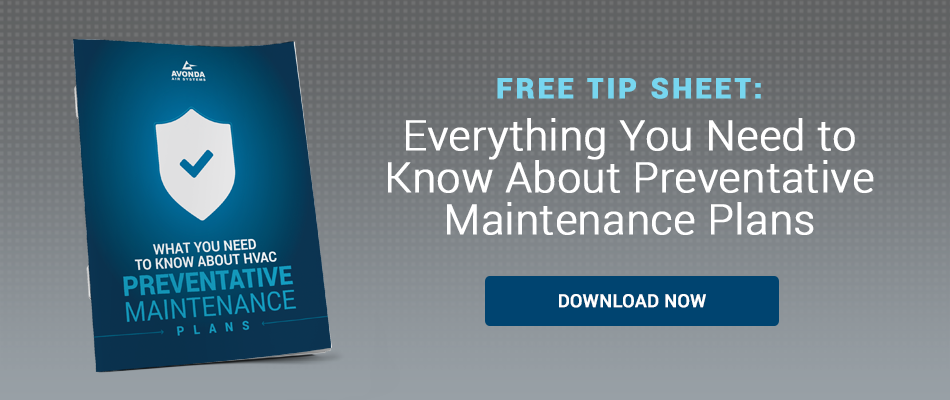
One of the most important considerations when designing and installing an HVAC system isn’t cost or ROI for efficiency upgrades, but the comfort of the building occupants—the real people who will be living, working, shopping, or dining there. Many people might think that automation controls are the biggest factor in building comfort, but one of the best things you can do to improve building comfort is follow a preventative maintenance plan (PMP).
HVAC equipment is often located on the roof and/or in the basement of the building; out of sight, out of mind. Most of the building occupants are unaware of its existence. However, every occupant relies on this equipment for daily comfort in the space. HVAC PMPs help improve building comfort by keeping the systems in peak condition, reducing the risk of an HVAC emergency, and creating a safer place to work or visit. Here’s how.
PMPs Create Consistency and Reliability
Sure, PMPs can reduce costly repairs and replacements of equipment. But more importantly, they help ensure that your systems are consistently producing the same results. Temperature and humidity are extremely important factors in the comfort of building occupants. With PM, the chances are much slimmer that someone is going to walk into work one day with cold air suddenly blasting out of the ceiling. Regular service creates this consistency and helps it continue for longer before it’s time for a replacement.
PMPs also reduce the risk of an HVAC emergency by creating reliability. With regular maintenance, you’ll usually have a forewarning if something’s not right and be able to take action to fix it before something more serious happens. People will be much less likely to stay and shop in your retail store or eat in your restaurant if the heat suddenly fails in the middle of winter. I’m not saying that a PMP will prevent this from happening altogether, but the chances are fewer if you follow a PMP.
PMPs Contribute to a Healthier Workplace
It might not be noticed on a day-to-day basis like temperature and humidity, but indoor air quality is absolutely vital to occupant comfort and health. The ventilation and air purification systems that control IAQ need to be serviced regularly in order to do their jobs properly. Improper operation and maintenance of these systems is one of the most common problems that impacts IAQ. The Center for Disease Control and Prevention says:
“HVAC systems alone can act as sources of pollutants. If these systems are not appropriately maintained, ventilation air filters can become saturated leading to potential microbial growth and odor concerns. Microbial growth can also result from stagnant water in drain pans or from uncontrolled moisture inside of air ducts and cooling coils.”
PMPs can ensure that these systems are being cleaned and serviced on a defined schedule so that odor and air quality don’t become issues.
Another building comfort consideration related to HVAC is noise control. If HVAC equipment has to be located near occupants, many systems have noise controlling features associated with them, and with the popularity of open office plans and more industrial spaces, noise from mechanical systems is definitely a concern. Those noise-control features need to be inspected and maintained just as the equipment itself needs to be serviced.
Don’t Sacrifice Building Comfort
When making a maintenance budget, don’t forget to consider building comfort as a major factor. If you plan to maintain building comfort ahead of time, you’ll reduce the risk of a costly and disruptive HVAC emergency that could affect occupants’ comfort level on a larger scale.
- Choosing an HVAC System When Building a New Home - September 21, 2015
- Mold in HVAC Systems: What You Need to Know - September 17, 2015
- Fall Vermont HVAC Checklist for Commercial Buildings - September 2, 2015
- What You Need to Know About Humidity in Your Vermont Home - August 25, 2015
- Does Your Office Have an Indoor Air Quality Problem? - August 10, 2015
- Stay Cool in Vermont with Ductless Air Conditioning - August 3, 2015
- 4 Things to Consider About Air Conditioning Replacement - July 27, 2015
- 3 Summer Ventilation Tips for Your Vermont Home - July 20, 2015
- Don’t Make These 3 Vermont Air Conditioning Mistakes This Summer - July 13, 2015
- When Should You Call a Vermont HVAC Contractor? - June 22, 2015

